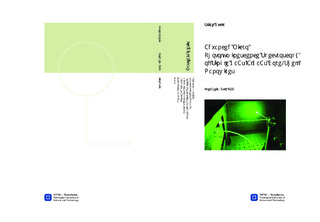Advanced Micro Photoluminescence Spectroscopy of Single GaAs/AlGaAs Core-Shell Nanowires
Abstract
Self-catalyzed (SC) growth is a relatively new approach to growing GaAs nanowires (NWs). It has several advantages to Au-catalyzed growth, such as integration on Si platforms. Many of the growth parameters, including growth rate and V/III ratio, and their influence on the growth process, are not fully understood. Three samples of SC GaAs/AlGaAs core-shell NWs were grown with different V/III ratios (17.4, 23.8 and 30.1), in order to study how this parameter influences the optoelectronic properties of the NWs. The molecular beam epitaxy vapor-liquid-solid approach was used to grow the samples. In this work they were investigated with excitation power-, temperature-, polarization- and time-resolved micro photoluminescence (u-PL) spectroscopy.Only the sample of highest V/III ratio, sample "sigma", exhibited free exciton emission coming from zinc blende (ZB) GaAs in the core of the NWs. The other two samples were dominated by type-II transitions, likely originating from the tip regions with interchanging ZB-wurtzite (WZ) layers. Sigma-NWs appear to have defects, however, as shown by its low emission intensity at room temperature. A reference sample, sample "alpha", was also studied with the same methods. This sample, which was grown with a medium V/III ratio (20.0), but a lower growth rate, also showed signs of free exciton emission, possibly originating from WZ regions in the tip.It is concluded that a higher V/III ratio is beneficial to optoelectronic applications, and that the number of defects are lowered, mostlikely due to fewer Ga antisites in the core. It is proposed that samples sigma and alpha are studied by high-resolution transmission electron microscopy(HR-TEM) to further determine their structure. Also, new samples should be grown with higher V/III ratios, some of which should have a lower growth rate. Efforts to passivate the defect-rich tip from the core, such as axial AlGaAs inserts, are proposed.
